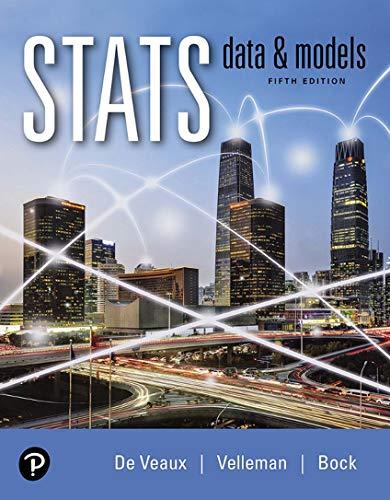Name recognition, part II The advertising company described in is thinking about signing a WNBA star to
Question:
Name recognition, part II The advertising company described in is thinking about signing a WNBA star to an endorsement deal. In its poll, 27% of the respondents could identify her.
1. Fans who never took statistics can’t understand why the company did not offer this WNBA player an endorsement contract even though the 27% recognition rate in the poll is above the 25% threshold. Explain it to them.
2. Suppose that further polling reveals that this WNBA star really is known to about 30% of the target audience. Did the company initially commit a Type I or Type II error in not signing her?
3. Would the power of the company’s test have been higher or lower if the player were more famous? Explain.
Exercise R5.26
Name recognition An advertising agency won’t sign an athlete to do product endorsements unless it is sure the person is known to more than 25% of its target audience. The agency always conducts a poll of 500 people to investigate the athlete’s name recognition before offering a contract. Then it tests H0:p=0.25 against HA:p>0.25 at a 5% level of significance.
1. Why does the company use upper-tail tests in this situation?
2. Explain what Type I and Type II errors would represent in this context, and describe the risk that each error poses to the company.
3. The company is thinking of changing its test to use a 10% level of significance. How would this change the company’s exposure to each type of risk?
Step by Step Answer:

Stats Data And Models
ISBN: 9780135163825
5th Edition
Authors: Richard D De Veaux, Paul F Velleman, David E Bock





